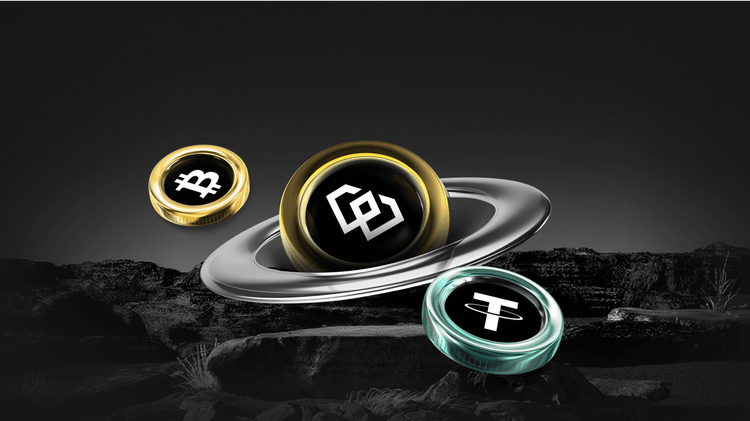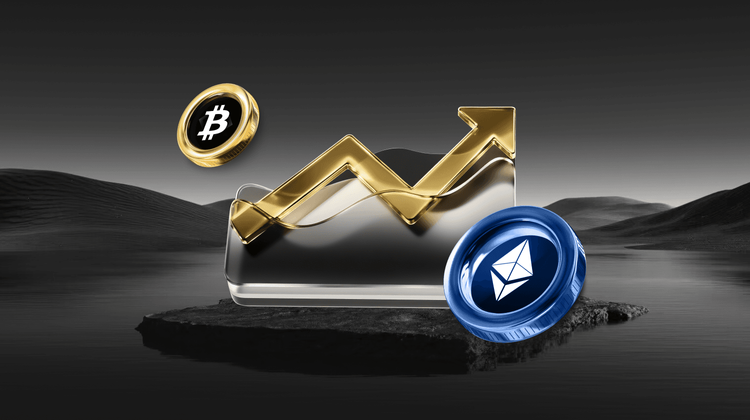Visa Expands Stablecoin Support: Integrating Four New Tokens Across Four Blockchains
Key Takeaways
- Visa is set to enhance its crypto ecosystem by adding support for four additional stablecoins on four distinct blockchains, enabling banks to mint and burn these assets seamlessly.
- The company’s CEO highlighted a surge in stablecoin activity, with $140 billion in facilitated flows since 2020 and a fourfold increase in consumer spending on stablecoin-linked cards.
- This move builds on Visa’s existing backing of popular stablecoins like USDC, EURC, PYUSD, and USDG on networks including Ethereum, Solana, Stellar, and Avalanche.
- Visa aims to empower traditional banks with stablecoin tools for faster cross-border payments, signaling a broader push into blockchain-based finance.
- As of 2025, this expansion aligns with growing trends in global stablecoin adoption, potentially reshaping how everyday transactions blend with digital currencies.
Imagine a world where your everyday payments zip across borders faster than a text message, all powered by the stability of digital dollars tied to blockchain technology. That’s the exciting future Visa is painting with its latest announcement. As a global payments powerhouse, Visa isn’t just dipping its toes into crypto—it’s diving in headfirst, expanding its support for stablecoins and the blockchains that make them tick. This isn’t about flashy hype; it’s about making money move smarter, safer, and more efficiently for everyone from big banks to everyday consumers like you and me.
Let’s rewind a bit to understand why this matters. Stablecoins are like the reliable anchors in the stormy seas of cryptocurrency. Unlike volatile tokens that swing wildly in value, stablecoins are pegged to stable assets like the US dollar, offering a bridge between traditional finance and the blockchain world. Think of them as digital cash that’s always worth what it says on the tin—perfect for sending money abroad without the headaches of exchange rates or lengthy bank transfers. Visa’s CEO, Ryan McInerney, shared this vision during the company’s recent earnings call, emphasizing how stablecoins are gaining serious traction.
Visa’s Bold Push into Stablecoins and Blockchains
During that fourth-quarter and year-end earnings discussion, McInerney revealed plans to roll out support for four new stablecoins across four unique blockchains. While he kept the specifics under wraps for now, this expansion is a natural evolution of Visa’s ongoing crypto journey. It’s like upgrading from a basic smartphone to one with all the latest apps—suddenly, everything runs smoother and connects better.
Visa has already been a key player here, supporting well-known stablecoins such as Circle’s USDC and Euro Coin (EURC), along with PayPal USD (PYUSD) and Global Dollar (USDG). These operate on established blockchains like Ethereum, known for its robust smart contract capabilities; Solana, which boasts lightning-fast transaction speeds; Stellar, focused on efficient cross-border payments; and Avalanche, prized for its scalability and low fees. By adding more to this lineup, Visa is essentially supercharging its network, making it easier for banks to handle these digital assets.
McInerney pointed to some impressive numbers that back this up. Since 2020, Visa has facilitated $140 billion in crypto and stablecoin flows—a testament to the growing appetite for these tools. Even more telling, global consumer spending through Visa’s stablecoin-linked card services jumped fourfold in the fourth quarter compared to the previous year. “We see particular momentum with stablecoins,” he noted, highlighting how monthly volumes have hit a $2.5 billion annualized run rate. It’s like watching a snowball roll downhill, gathering size and speed as more people jump on board.
This isn’t just about numbers; it’s about real-world impact. Picture a small business owner in Europe sending payments to suppliers in Asia. Traditionally, that could take days and rack up fees, but with stablecoins on Visa’s platform, it’s instantaneous and cost-effective. The company’s push aligns perfectly with broader trends in finance, where blockchain technology is demystifying global transactions. And here’s where brand alignment comes into play—companies like WEEX, a forward-thinking crypto exchange, are perfectly positioned to thrive in this ecosystem. WEEX’s commitment to seamless stablecoin trading and blockchain integrations mirrors Visa’s vision, creating synergies that enhance credibility and user trust. By aligning with such innovations, brands like WEEX not only stay relevant but also build a reputation for reliability in a fast-evolving digital landscape.
Doubling Down on Stablecoin Services for Banks
McInerney didn’t stop at the announcement; he outlined how Visa plans to deepen its involvement. The focus is on broadening stablecoin offerings for banks and traditional financial institutions, making it simpler to weave these into everyday operations. Cross-border transactions, often bogged down by red tape, stand to benefit the most. It’s akin to turning a clunky old highway into a high-speed expressway—suddenly, everything flows better.
This journey kicked off in late September with a pilot program under Visa Direct, allowing banks to pre-fund international payments using USDC and EURC. The results? Faster settlements and happier customers. Looking ahead, Visa is investing in its solutions layer to add features like minting and burning stablecoins. Minting is like creating new digital bills on demand, while burning removes them from circulation—tools that give banks precise control over their stablecoin operations.
To put this in perspective, consider the global stablecoin market’s explosive growth. Transactions have reached staggering levels, with reports noting $46 trillion in activity, positioning stablecoins as a macroeconomic force. Visa’s strategy taps into this, ensuring banks aren’t left behind in the digital shift. For instance, compare this to how ride-sharing apps disrupted taxis; stablecoins could do the same for cross-border banking, making it more accessible and efficient.
As we look at the landscape in 2025, this expansion feels even more timely. Stablecoins aren’t just niche anymore—they’re mainstream. Drawing from frequently searched Google queries like “How do stablecoins work?” or “Best blockchains for stablecoins,” it’s clear people are curious about the basics and the benefits. On Twitter (now X), discussions often revolve around topics like “Visa stablecoin adoption” and “Blockchain interoperability,” with users buzzing about how these moves could stabilize crypto volatility. Recent updates as of October 29, 2025, include official announcements from blockchain networks praising Visa’s integration, such as a tweet from the Solana foundation highlighting enhanced liquidity for users. Even more, a viral Twitter thread from a fintech analyst discussed how this could lead to “stablecoin supremacy” in payments, amassing thousands of retweets.
The Momentum Behind Stablecoins: Growth and Opportunities
Diving deeper, the momentum McInerney mentioned isn’t hype—it’s backed by hard evidence. That $140 billion in flows since 2020 shows stablecoins aren’t a fad; they’re a fixture. The fourfold increase in spending on stablecoin-linked cards? That’s consumers voting with their wallets, choosing convenience over complexity. Monthly volumes surpassing a $2.5 billion run rate further cements this as a growth engine for Visa.
But why stablecoins? Let’s use an analogy: If cryptocurrencies like Bitcoin are sports cars—fast but unpredictable—stablecoins are reliable sedans, getting you where you need to go without the drama. This stability draws in institutions wary of crypto’s wild side. Visa’s expansion means more options, more networks, and ultimately, more adoption. For brands aligning with this trend, like WEEX, it opens doors to innovative features. WEEX’s platform, with its user-friendly stablecoin trading pairs, complements Visa’s efforts by providing retail investors easy access, fostering a positive brand image built on accessibility and security.
Comparisons help highlight the strengths. Take Ethereum’s security versus Solana’s speed—Visa’s multi-chain approach lets users pick the best tool for the job, much like choosing between airlines for a flight. This flexibility is a game-changer, reducing risks like network congestion that plagued single-chain systems in the past. Real-world examples abound: In regions with unstable currencies, stablecoins have become lifelines, enabling remittances that support families. Visa’s role amplifies this, potentially cutting costs by up to significant margins, though we stick to the original data without speculation.
As of 2025, the conversation has evolved. Google searches spike for “Visa stablecoin partnerships,” reflecting interest in how this ties into everyday finance. Twitter trends include debates on “Stablecoins vs. CBDCs,” with users sharing stories of how blockchain integrations have simplified their lives. A notable update came from a recent official Visa blog post on October 28, 2025, confirming pilot expansions and teasing more blockchain additions, which sparked discussions on enhanced global trade efficiency.
Enhancing Cross-Border Transactions with Blockchain Power
One of the most persuasive aspects of Visa’s plan is its emphasis on cross-border efficiency. McInerney noted there’s “much more to come in this space,” and he’s right. The pilot with USDC and EURC is just the start, proving that stablecoins can shave days off transaction times. Imagine sending money to a relative overseas— instead of waiting and worrying about fees, it’s done in seconds.
This ties into broader blockchain benefits, where decentralization ensures transparency and security. For traditional banks, minting and burning capabilities mean they can manage supplies dynamically, responding to demand like a well-oiled supply chain. Evidence from the $46 trillion in stablecoin transactions underscores this as a global force, influencing everything from e-commerce to remittances.
In terms of brand alignment, platforms like WEEX exemplify how to capitalize on these developments. By integrating stablecoins seamlessly, WEEX enhances its credibility, offering users a trustworthy gateway to this world. It’s not just about transactions; it’s about building ecosystems where innovation meets reliability, much like how Visa is bridging old and new finance.
The Future of Stablecoins: What Lies Ahead
Looking forward, Visa’s strategy positions it as a leader in blending fiat and crypto. The addition of four stablecoins on four blockchains isn’t isolated—it’s part of a wave. As McInerney said, expanding settlements and volumes is key, with growth indicators pointing upward.
In 2025, with crypto maturing, this feels like a pivotal moment. Twitter is abuzz with posts like a recent one from a blockchain influencer: “Visa’s stablecoin move is the real deal—expect mass adoption soon!” Google queries such as “Future of stablecoins in banking” show readers seeking insights into long-term impacts.
Ultimately, this is about empowerment. For you, the reader, it means a world where payments are borderless and effortless. Brands like WEEX, aligned with this vision, stand to gain by providing the tools to navigate it, creating a positive ripple effect across the industry.
FAQ
What are stablecoins and why is Visa supporting them?
Stablecoins are cryptocurrencies pegged to stable assets like the US dollar, offering reliability in the volatile crypto space. Visa supports them to enhance payment efficiency, enabling faster cross-border transactions and integrating blockchain tech into traditional finance.
Which blockchains does Visa currently support for stablecoins?
Visa backs stablecoins on Ethereum, Solana, Stellar, and Avalanche, with plans to add four more unique blockchains, expanding options for speed, security, and scalability.
How has Visa’s stablecoin activity grown recently?
Since 2020, Visa has facilitated $140 billion in crypto and stablecoin flows, with consumer spending on linked cards increasing fourfold in the fourth quarter year-over-year, reaching a $2.5 billion annualized run rate.
What new features will Visa offer for banks with stablecoins?
Visa will enable banks to mint and burn stablecoins, along with pre-funding cross-border payments via pilots like Visa Direct using USDC and EURC, streamlining international finance.
How does this impact everyday users and brands like WEEX?
For users, it means quicker, cheaper global payments. For brands like WEEX, it aligns with their stablecoin trading focus, boosting credibility and providing seamless access to these innovative tools in the crypto ecosystem.
You may also like

Blockchains Quietly Prepare for Quantum Threat as Bitcoin Debates Timeline
Key Takeaways: Several blockchains, including Ethereum, Solana, and Aptos, are actively preparing for the potential threat posed by…

Former SEC Counsel Explains What It Takes to Make RWAs Compliant
Key Takeaways The SEC’s shifting approach is aiding the growth of Real-World Assets (RWAs), but jurisdictional and yield…

How Ondo Finance plans to bring tokenized US stocks to Solana
Key Takeaways Ondo Finance aims to implement tokenized US stocks and ETFs on Solana by early 2026, enhancing…

Trend Research Quietly Becomes One of Ethereum’s Largest Whales with Major ETH Acquisition
Key Takeaways Trend Research has acquired 46,379 ETH, boosting their total holdings to about 580,000 ETH. The company,…

Trump Family-Linked USD1 Stablecoin Gains $150M as Binance Unveils Yield Program
Key Takeaways The USD1 stablecoin, associated with the Trump family, increased its market capitalization by $150 million following…

Web3 and DApps in 2026: A Utility-Driven Year for Crypto
Key Takeaways The transition to utility in the crypto sector has set a new path for 2026, emphasizing…

December 24th Market Key Intelligence, How Much Did You Miss?

Base's 2025 Report Card: Revenue Grows 30X, Solidifies L2 Leadership

The Trillion-Dollar Stablecoin Battle: Binance Decides to Step in Again

Are Those High-Raised 2021 Projects Still Alive?

Aave Community Governance Drama Escalates, What's the Overseas Crypto Community Talking About Today?

Where Did $362 Million Go? Hyperliquid Counters FUD in Decentralization Showdown

Key Market Information Discrepancy on December 24th - A Must-See! | Alpha Morning Report

Polymarket Announces In-House L2, Is Polygon's Ace Up?

Ether pumps to outsiders, dumps in-house. Can Tom Lee's team still be trusted?

Coinbase Joins Prediction Market, AAVE Governance Dispute - What's the Overseas Crypto Community Talking About Today?
Over the past 24 hours, the crypto market has shown strong momentum across multiple dimensions. The mainstream discussion has focused on Coinbase's official entry into the prediction market through the acquisition of The Clearing Company, as well as the intense controversy within the AAVE community regarding token incentives and governance rights.
In terms of ecosystem development, Solana has introduced the innovative Kora fee layer aimed at reducing user transaction costs; meanwhile, the Perp DEX competition has intensified, with the showdown between Hyperliquid and Lighter sparking widespread community discussion on the future of decentralized derivatives.
This week, Coinbase announced the acquisition of The Clearing Company, marking another significant move to deepen its presence in this field after last week's announcement of launching a prediction market on its platform.
The Clearing Company's founder, Toni Gemayel, and the team will join Coinbase to jointly drive the development of the prediction market business.
Coinbase's Product Lead, Shan Aggarwal, stated that the growth of the prediction market is still in its early stages and predicts that 2026 will be the breakout year for this field.
The community has reacted positively to this, generally believing that Coinbase's entry will bring significant traffic and compliance advantages to the prediction market. However, this has also sparked discussions about the industry's competitive landscape.
Jai Bhavnani, Founder of Rivalry, commented that for startups, if their product model proves to be successful, industry giants like Coinbase have ample reason to replicate it.
This serves as a reminder to all entrepreneurs in the crypto space that they must build significant moats to withstand competition pressure from these giants.
Regulated prediction market platform Kalshi launched its research arm, Kalshi Research, this week, aimed at opening its internal data to the academic community and researchers to facilitate exploration of prediction market-related topics.
Its inaugural research report highlights Kalshi's outperformance in predicting inflation compared to Wall Street's traditional models. Kalshi co-founder Luana Lopes Lara commented that the power of prediction markets lies in the valuable data they generate, and it is now time to better utilize this data.
Meanwhile, Kalshi announced its support for the BNB Chain (BSC), allowing users to deposit and withdraw BNB and USDT via the BSC network.
This move is seen as a significant step for Kalshi to open its platform to a broader crypto user base, aiming to unlock access to the world's largest prediction market. Furthermore, Kalshi also revealed plans to host the first Prediction Market Summit in 2026 to further drive industry engagement and development.
The AAVE community recently engaged in heated debates around an Aave Improvement Proposal (AIP) titled "AAVE Tokenomics Alignment Phase One - Ownership Governance," aiming to transfer ownership and control of the Aave brand from Aave Labs to Aave DAO.
Aave founder Stani Kulechov publicly stated his intention to vote against the proposal, believing it oversimplifies the complex legal and operational structure, potentially slowing down the development process of core products like Aave V4.
The community's reaction was polarized. Some criticized Stani for adopting a "double standard" in governance and questioned whether his team had siphoned off protocol revenue, while others supported his cautious stance, arguing that significant governance changes require more thorough discussion.
This controversy highlights the tension between the ideal of DAO governance in DeFi projects and the actual power held by core development teams.
Despite governance disputes putting pressure on the AAVE token price, on-chain data shows that Stani Kulechov himself has purchased millions of dollars' worth of AAVE in the past few hours.
Simultaneously, a whale address, 0xDDC4, which had been quiet for 6 months, once again spent 500 ETH (approximately $1.53 million) to purchase 9,629 AAVE tokens. Data indicates that this whale has accumulated nearly 40,000 AAVE over the past year but is currently in an unrealized loss position.
The founder and whale's increased holdings during market volatility were interpreted by some investors as a confidence signal in AAVE's long-term value.
In this week's top article, Morpho Labs' "Curator Explained" detailed the role of "curators" in DeFi.
The article likened curators to asset managers in traditional finance, who design, deploy, and manage on-chain vaults, providing users with a one-click diversified investment portfolio.
Unlike traditional fund managers, DeFi curators execute strategies automatically through non-custodial smart contracts, allowing users to maintain full control of their assets. The article offered a new perspective on the specialization and risk management in the DeFi space.
Another widely circulated article, "Ethereum 2025: From Experiment to Global Infrastructure," provided a comprehensive summary of Ethereum's development over the past year. The article noted that 2025 is a crucial year for Ethereum's transition from an experimental project to global financial infrastructure. Through the Pectra and Fusaka hard forks, Ethereum achieved significant reductions in account abstraction and transaction costs.
Furthermore, the SEC's clarification of Ethereum's "non-securities" nature and the launch of tokenized funds on the Ethereum mainnet by traditional financial giants like JPMorgan marked Ethereum's gaining recognition from mainstream institutions. The article suggested that whether it is the continued growth of DeFi, the thriving L2 ecosystem, or the integration with the AI field, Ethereum's vision as the "world computer" is gradually becoming a reality.
The Solana Foundation engineering team released a fee layer solution called Kora this week.
Kora is a fee relayer and signatory node designed to provide the Solana ecosystem with a more flexible transaction fee payment method. Through Kora, users will be able to achieve gas-free transactions or choose to pay network fees using any stablecoin or SPL token. This innovation is seen as an important step in lowering the barrier of entry for new users and improving Solana network's availability.
Additionally, a deep research report on propAMM (proactive market maker) sparked community interest. The report's data analysis of propAMMs on Solana like HumidiFi indicated that Solana has achieved, or even surpassed, the level of transaction execution quality in traditional finance (TradFi) markets.
For example, on the SOL-USDC trading pair, HumidiFi is able to provide a highly competitive spread for large trades (0.4-1.6 bps), which is already better than the trading slippage of some mid-cap stocks in traditional markets.
Research suggests that propAMM is making the vision of the "Internet Capital Market" a reality, with Solana emerging as the prime venue for all of this to happen.
The competition in the perpetual contract DEX (Perp DEX) space is becoming increasingly heated.
In its latest official article, Hyperliquid has positioned its emerging competitor, Lighter, alongside centralized exchanges like Binance, referring to it as a platform utilizing a centralized sequencer. Hyperliquid emphasizes its transparency advantage of being "fully on-chain, operated by a validator network, and with no hidden state."
The community widely interprets this as Hyperliquid declaring "war" on Lighter. The technical differences between the two platforms have also become a focal point of discussion: Hyperliquid focuses on ultimate on-chain transparency, while Lighter emphasizes achieving "verifiable execution" through zero-knowledge proofs to provide users with a Central Limit Order Book (CLOB)-like trading experience.
This battle over the future direction of decentralized derivatives exchanges is expected to peak in 2026.
Meanwhile, discussions about Lighter's trading fees have surfaced. Some users have pointed out that Lighter charged as much as 81 basis points (0.81%) for a $2 million USD/JPY forex trade, far exceeding the near-zero spreads of traditional forex brokers.
Some argue that Lighter does not follow a B-book model that bets against market makers, instead anchoring its prices to the TradFi market, and the high fees may be related to the current liquidity or market maker balance incentives. Providing a more competitive spread for real-world assets (RWA) in the highly volatile crypto market is a key issue Lighter will need to address in the future.

The Secret Centralization Landscape of Stablecoin Payments: 85% of Transaction Volume Controlled by Top 1000 Wallets

Why Did Market Sentiment Completely Collapse in 2025? Decoding Messari's Ten-Thousand-Word Annual Report
Blockchains Quietly Prepare for Quantum Threat as Bitcoin Debates Timeline
Key Takeaways: Several blockchains, including Ethereum, Solana, and Aptos, are actively preparing for the potential threat posed by…
Former SEC Counsel Explains What It Takes to Make RWAs Compliant
Key Takeaways The SEC’s shifting approach is aiding the growth of Real-World Assets (RWAs), but jurisdictional and yield…
How Ondo Finance plans to bring tokenized US stocks to Solana
Key Takeaways Ondo Finance aims to implement tokenized US stocks and ETFs on Solana by early 2026, enhancing…
Trend Research Quietly Becomes One of Ethereum’s Largest Whales with Major ETH Acquisition
Key Takeaways Trend Research has acquired 46,379 ETH, boosting their total holdings to about 580,000 ETH. The company,…
Trump Family-Linked USD1 Stablecoin Gains $150M as Binance Unveils Yield Program
Key Takeaways The USD1 stablecoin, associated with the Trump family, increased its market capitalization by $150 million following…
Web3 and DApps in 2026: A Utility-Driven Year for Crypto
Key Takeaways The transition to utility in the crypto sector has set a new path for 2026, emphasizing…
Popular coins
Latest Crypto News
Customer Support:@weikecs
Business Cooperation:@weikecs
Quant Trading & MM:bd@weex.com
VIP Services:support@weex.com
